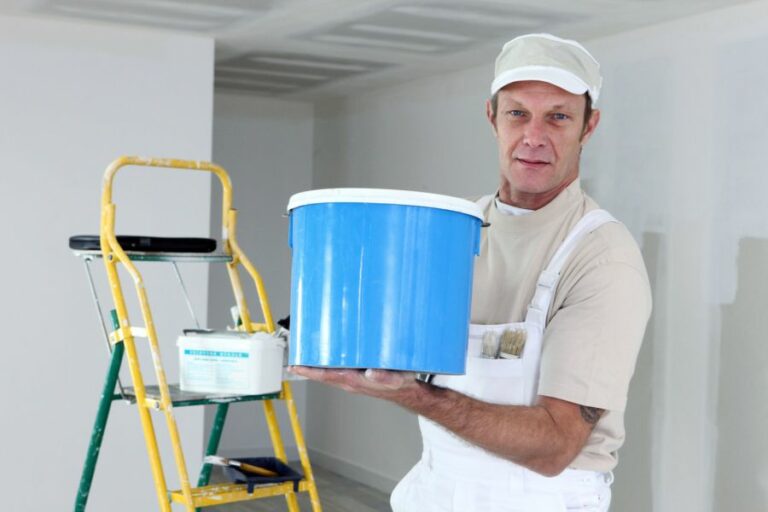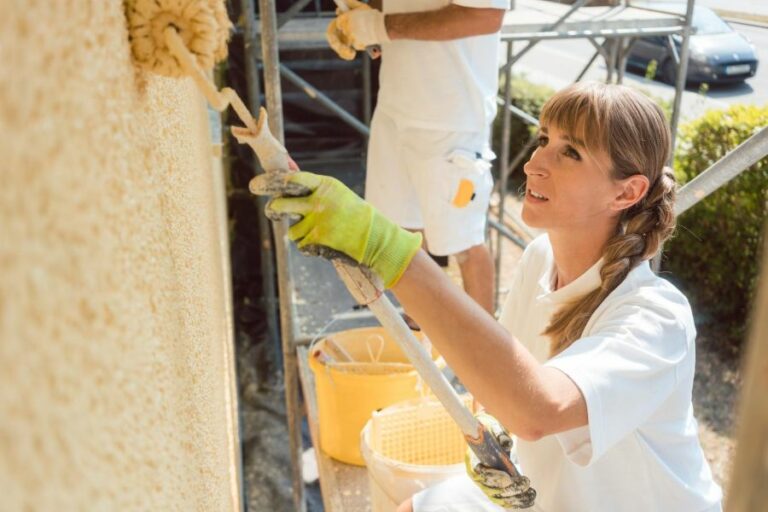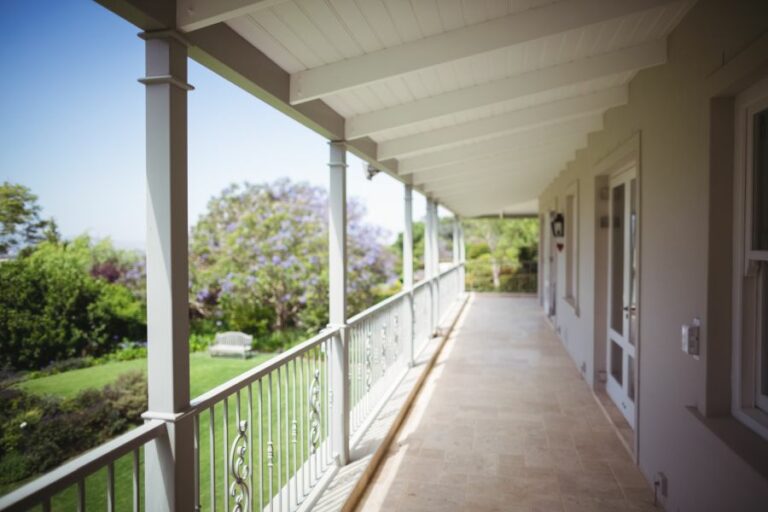Sealing Gaps For A Flawless Paint Job. What Pros Say
Are you tired of noticing imperfections in your paint job after putting in hours of hard work? You’re not alone. Many struggle to achieve that flawless, professional look they desire, often due to gaps and cracks that are left unaddressed before painting begins.
Sealing gaps for a flawless paint job:
Sealing gaps is essential for a flawless paint finish, improving visual appearance and functionality. It prevents moisture damage, increases energy efficiency, and creates a smooth surface for painting. Properly identifying gaps, choosing the right sealant, and employing the correct techniques are crucial steps in achieving a seamless paint job.

Tired of uneven paint finishes? We’ve got the secrets to achieving that perfect, seamless paint job you’ve always wanted. Read on as we reveal expert tips for sealing gaps and fixing imperfections, ensuring a flawless look in no time! Dive in and transform your space today.
Contents
- 1 Achieving a Perfect Paint Finish by Sealing Gaps
- 2 Painters’ Techniques for Gap Filling
- 3 Filling Large Gaps Prior to Painting: A Guide
- 4 Top Gap Fillers to Use Before Painting
- 5 Ideal Caulk Choices for Gap Filling Pre-Painting
Achieving a Perfect Paint Finish by Sealing Gaps
• Importance of Sealing Gaps in the Painting Process
Before you start any paint job, it is crucial to ensure that all gaps and cracks are sealed properly. Sealing gaps not only improves the visual appearance of your paint job but also serves functional purposes. The key reasons for sealing gaps are:
- Preventing moisture damage: Gaps and cracks allow moisture to seep into the walls and ceilings. This moisture can damage the surface and promote mold growth. Proper sealing keeps moisture out, preserving the integrity of the paint job and wall structure.
- Energy efficiency: Gaps can cause drafts and inefficient heating or cooling in your home. Sealing them contributes to energy efficiency and cost savings on your energy bills.
- Smooth finish: Sealing gaps and cracks provides a smooth, even surface for your paint. This results in a high-quality, professional finish.
• Identifying and Assessing Gaps
Before you begin filling gaps in preparation for painting, you need to thoroughly inspect the surface you’re working on. Look for the following types of gaps:
- Gaps between wall panels, drywall, or plaster
- Gaps around windows, doors, and trim
- Settlement cracks in walls and ceilings
When evaluating gaps, be sure to take note of their width and depth, as this will determine the best method for repairing them.
• Choosing the Right Sealant
Different types of gaps require different sealants. Choosing the right one for the job is critical for long-lasting, high-quality results. The most common sealants are:
- Caulk: A flexible, waterproof sealant that is ideal for filling gaps around windows, doors, and trim. It is available in both paintable and non-paintable varieties. For best results, choose a paintable, mildew-resistant caulk that is compatible with the type of paint you plan to use.
- Joint compound: A thick, plaster-like paste used for filling larger gaps and seams in drywall or plaster walls. It dries hard and sands smooth for a seamless finish when painted over.
- Spackling paste: A lightweight, easy-to-use filler that is perfect for filling small holes, hairline cracks, and shallow gaps in walls and ceilings.
As a professional with extensive experience in the industry, I highly recommend choosing the sealant that best fits your needs in order to achieve a flawless paint job.
• Proper Gap Filling Techniques
– Caulking
- Clean the gap thoroughly, removing any dirt, dust, or debris.
- Cut the tip of the caulk tube at a 45-degree angle, and puncture the inner seal.
- Load the caulk tube into a caulking gun, holding the gun at a consistent 45-degree angle.
- Start at one end of the gap and steadily apply a smooth, even bead of caulk, avoiding any gaps or air bubbles.
- Smooth the bead with a damp finger, caulking tool, or damp sponge.
- Clean up any excess caulk with a clean, damp cloth before it dries.
– Applying Joint Compound
- Clean the gap of any dirt or debris, and ensure it’s free of loose or damaged wall material.
- Apply a layer of joint compound with a putty knife, pressing firmly to fill the gap evenly.
- Allow the joint compound to dry completely, which may take up to 24 hours.
- Sand the dried joint compound with fine-grit sandpaper, ensuring a smooth and even finish.
- Wipe down the area with a damp cloth to remove any remaining dust or debris.
– Using Spackling Paste
- Clean the gap or hole of any dirt or loose debris.
- Apply the spackling paste with a putty knife or your finger, ensuring the gap is filled and excess paste is wiped away.
- Allow the spackling paste to dry completely, typically one to two hours.
- Sand the area with fine-grit sandpaper, ensuring a smooth and even finish.
- Wipe down the area with a damp cloth to remove any remaining dust or debris.
• Preparing the Surface for Painting
Before applying paint, it’s essential to properly prepare the surface. This includes:
- Removing dust and debris with a slightly damp cloth
- Allowing any sealants to dry completely
- Priming any areas with joint compound or spackling paste to ensure paint adhesion
- Lightly sanding and cleaning any rough spots or previous paint lines
Following these steps will help ensure a flawless paint job with lasting results.
• Final Thoughts
Sealing gaps is a crucial step in achieving a flawless paint job. By identifying gaps, choosing the right sealant, and following proper techniques, you can create a smooth and even surface for painting.
Painters’ Techniques for Gap Filling
Filling gaps is an essential part of creating a professional and finished appearance for any painting project. While there are different types of fillers and techniques, the main goal is to create a smooth, seamless surface.
• Caulk: A Useful Tool for Filling Gaps
Caulk is one of the most commonly used materials for filling gaps, as it is easy to work with and dries relatively quickly. Painters often rely on acrylic latex caulk for a variety of projects, as it adheres well to various surfaces and can be easily painted over.
Acrylic latex caulk is also a great choice because it provides flexibility and crack resistance, which is crucial for areas with frequent temperature changes or movement.
– Choosing the Right Caulk
When selecting a caulk, there are some factors to consider. One important aspect is the surface where the caulk will be applied. Different surfaces might require different caulk types, such as silicone caulk for glass or metal surfaces.
Additionally, painters should choose a caulk with a long-lasting formula, as it will make repainting easier in the future.
– How to Apply Caulk
Applying caulk requires a steady hand and attention to detail. A caulking gun is a useful tool for this task, enabling even distribution and minimizing waste. When using a caulking gun, make sure to cut the tip of the caulk tube at a 45-degree angle and puncture the inner seal.
Additionally, it’s essential to apply consistent pressure when caulking, ensuring a smooth and even bead. After applying the caulk, use a damp sponge or your finger to smooth it out, making sure to remove any excess caulk for a clean appearance.
• Wood Filler: A Must-Have for Wooden Surfaces
For projects involving wood surfaces, wood filler is an essential material for filling gaps. Wood filler provides a strong bond, making it suitable for fixing cracks, holes, and imperfections in wood.
There are several varieties of wood fillers available, including water-based, solvent-based, and epoxy-based fillers.
– Water-Based Wood Filler
Water-based wood fillers are easy to work with, as they can be quickly cleaned up with water if needed. They also dry quickly, which allows painters to move on to the next step sooner.
However, water-based wood fillers may not provide the same level of durability as other types, making them less suitable for more significant repairs or high-traffic areas.
– Solvent-Based Wood Filler
Solvent-based wood fillers offer a durable and robust solution for filling gaps in wood surfaces. They are waterproof and resilient, making them suitable for both interior and exterior projects. However, solvent-based fillers often have a strong odor, and they take longer to dry than water-based fillers.
– Epoxy-Based Wood Filler
For substantial repairs and filling large gaps, an epoxy-based wood filler is an excellent choice. These fillers typically consist of a two-part system and provide exceptional durability and resistance to water and chemicals. Epoxy-based fillers take longer to dry but create a long-lasting bond once cured.
– Applying Wood Filler
It is vital to follow the manufacturer’s instructions when using wood fillers to ensure proper application and curing. Generally, the wood filler should be applied with a putty knife and pressed firmly into the gap, ensuring that the product fills the entire void.
After application, allow the wood filler to dry before sanding the surface smooth and preparing it for painting.
• Spackle: A Versatile Option for Smaller Gaps
Spackle is another popular material for filling small gaps and holes, particularly in drywall or plaster. It comes in various formulas, including lightweight and all-purpose varieties. Spackle is easy to work with, dries quickly, and can be easily sanded for a smooth and even surface.
– Applying Spackle
To apply spackle, use a putty knife to press the material firmly into the gap or hole, ensuring full coverage. After application, let the spackle dry, typically around 30 minutes for small repairs. Once the spackle is dry, sand the surface smooth and remove any dust before painting.
• In Conclusion: Filling Gaps with Skill and Precision
Filling gaps is a crucial step in any painting project to achieve a professional, polished result. By understanding and selecting the appropriate materials and techniques for filling gaps, painters can ensure a flawless finish that is both visually appealing and durable.
Remember to always follow manufacturer instructions and perform proper surface preparation before applying these materials. By following these recommendations, you can take your painting projects to the next level and impress clients with your attention to detail and expertise.
Filling Large Gaps Prior to Painting: A Guide
Filling large gaps before painting can be an essential step for achieving professional-looking results. Let’s explore some of the best methods for tackling this task, as well as important tips and tricks to ensure your project turns out perfectly.
Get ready to learn everything you need to know about addressing large gaps before breaking out the paintbrush.
• Identifying and Preparing the Gap Area
First and foremost, you must properly identify the gap that needs to be filled. Large gaps can usually be found around door and window frames, in the corners of walls, or where two different materials meet.
It’s essential to thoroughly clean the area around the gap to ensure that there is no dirt, dust, or debris that might interfere with the application of filler materials.
– Gather Necessary Tools and Materials
Before proceeding, it’s important to gather all the necessary tools and materials for your project. Some common items you might need include:
- A putty knife or similar tool for applying filler material
- A utility knife or scraper for removing any loose debris
- A vacuum cleaner with a hose attachment to clean the gap thoroughly
- A cloth and cleaning solution for wiping the area around the gap
- A sanding block or sandpaper for smoothing out filled areas
• Choosing the Right Filler for Large Gaps
There are several different filler materials available to address large gaps. When selecting the right one for your project, consider factors such as material types, drying time, and ease of use. The following options are some commonly used filler materials for large gaps:
– Expanding Foam
Expanding foam is an excellent choice for filling large gaps because it can easily conform to the shape and size of the gap. It dries quickly and can be sanded and painted once it has cured. Be sure to read and follow the manufacturer’s recommendations when working with expanding foam.
– Caulk
Caulk is a versatile option for filling gaps, but it can be less appropriate for very large gaps due to the difficulty of achieving a smooth finish. It is recommended to use a paintable caulk to ensure the best results when painting over it.
– Pre-Made Wood Filler
Pre-made wood fillers are another option, particularly for large gaps in wooden surfaces. These fillers often come in various shades to match the color of the wood you are working with. Be sure to choose a paintable and stainable wood filler if you plan to paint the surface after the gap is filled.
– Joint Compound
Joint compound, also known as drywall mud, is a suitable option for repairing larger gaps in drywall surfaces. It is important to note that when using a joint compound, you will need to apply it in layers, allowing each layer to dry before applying the next one.
• Instructions for Filling Large Gaps
With the appropriate filler material and tools in hand, you can now proceed to fill the large gap in your project. Follow these step-by-step instructions carefully to ensure successful results:
- Apply the Filler Material: Using your putty knife or another appropriate tool, carefully apply the filler material to the gap. Ensure to firmly press the material into the gap so that it fills the entire void. Be sure also to apply enough material to fill the gap completely, without overfilling.
- Smooth Out the Surface: Once the gap is filled, use the edge of the putty knife to smooth out the surface. Scrape off any excess filler material to create a level and even surface. If applicable, refer to the filler material’s manufacturer guidelines for specific instructions on smoothing.
- Allow Filler to Dry and Cure: Allow the filler material to dry and cure completely before moving on to the next step. Depending on the type of filler material you choose, this process can take anywhere from a few hours to several days.
- Sanding the Filled Area: Once the filler is dry and cured, use a sanding block or sandpaper to smooth out any uneven spots or rough edges. Be cautious not to sand too much, as this may damage the surrounding surfaces.
- Clean the Surface: After sanding, use a vacuum cleaner or a cloth to remove any dust or debris from the filled area.
- Inspect the Filled Gap: Upon completing the previous steps, inspect the filled gap to ensure it is smooth, even, and free of imperfections. If necessary, repeat the steps until you achieve the desired result.
• Painting Over Filled Gaps
Once the gap is thoroughly filled and inspected, you can proceed to paint over it. To achieve the best results, take the following steps:
- Prime the Filled Area: Apply a layer of primer to the filled area, following the manufacturer’s recommendations, to ensure proper paint adhesion and avoid any inconsistencies in the final result.
- Paint the Surface: Once the primer has dried, apply the final coat of paint to the filled area and surrounding surfaces. Be sure to blend the new paint with the existing paint job using a brush or roller.
- Inspect the Finished Project: After painting, inspect the filled gap to ensure a smooth, even finish in both appearance and texture.
By following these instructions and using the proper materials, you’re on your way to successfully fill that large gap and achieving a fantastic paint job!
Step | Instructions |
|---|---|
1 | Clear the gap by removing any old paint, debris, or loose material. |
2 | Use a utility knife to widen and square off the gap so it is easier to fill. |
3 | Apply a layer of painter’s tape to protect the surfaces on either side of the gap. |
4 | Choose a suitable filler material, such as a pre-mixed joint compound or a paintable caulk. |
5 | Apply the filler material to the gap using a putty knife or caulking gun, spreading it evenly and making sure to fill the entire depth of the gap. |
6 | As the filler material begins to dry and harden, smooth the surface with a putty knife or a wet finger to match the surrounding area. |
7 | Once the filler material has completely dried, sand the area to create an even surface. |
8 | Remove the painter’s tape and carefully retouch any areas that may have been damaged during the process. |
9 | Prime the filled gap and surrounding area to create a uniform surface for painting. |
10 | Paint the area, blending the paint with the surrounding area to create a seamless finish. |
Top Gap Fillers to Use Before Painting
When undertaking a painting project, achieving a smooth and professional finish is of utmost importance. One key aspect in accomplishing this goal is the use of gap fillers.
Gap fillers not only help in concealing cracks and imperfections on the surface but also contribute to an overall flawless appearance.
• Choosing the Right Gap Filler for Your Painting Project
– Acrylic Latex Caulk
One of the most popular and highly recommended gap fillers in painting projects is acrylic latex caulk. This type of gap filler is water-based, making it easy to clean up and paint over. It is highly durable and can expand slightly to accommodate the natural movement of surfaces.
Acrylic latex caulk is suitable for filling gaps on a variety of surfaces, including wood, plaster, and drywall.
Pros:
- Easy to apply and clean up
- Can be painted over quickly
- Resistant to weathering and UV exposure
- Slightly flexible
Cons:
- May not adhere well to certain surfaces like metal or glass
- May not be suitable for larger gaps
– Vinyl Spackling
Vinyl spackling is another popular gap filler option that is ideal for small holes, cracks, and dents on surfaces such as drywall and plaster. This lightweight compound is easy to work with and dries quickly, allowing you to move on to painting without significant delays.
Pros:
- Dries quickly
- Suitable for a variety of surfaces
- Easily sanded for a smooth finish
Cons:
- Not ideal for large gaps or exterior use
- May shrink slightly as it dries
– Epoxy Fillers
If you are dealing with larger gaps or exterior surfaces exposed to harsh weather conditions, epoxy fillers may be the ideal solution. These fillers consist of two parts – resin and hardener – that need to be mixed together before use.
Epoxy fillers create a strong and durable bond, ideal for filling gaps in materials such as metal, concrete, and fiberglass.
Pros:
- Strong and durable
- Suitable for large gaps
- Resistant to moisture, chemicals, and external factors
- Compatible with a variety of surfaces
Cons:
- More difficult to work with than other fillers
- Longer curing time
- May require respirators and gloves for safe handling
– Elastomeric Fillers
Elastomeric fillers, also known as flexible fillers, are formulated to offer great adhesion and flexibility. This makes them perfect for filling gaps on surfaces that experience regular movements, such as windows, doors, and siding.
These gap fillers are paintable, ensuring seamless integration with the rest of your paint job.
Pros:
- Highly flexible and durable
- Can be painted over
- Resistant to weathering and UV exposure
Cons:
- May not be suitable for all surfaces
- Some types may have a longer drying time
• Application Tips for Gap Fillers
To ensure the best results from your gap filler, follow these tips:
- Surface Preparation: Clean and dry the surface, ensuring it is free of dust, grease, and loose particles. A clean surface ensures better adhesion for the gap filler.
- Choose the Right Gap Filler: Consider the surface type, gap size, and project requirements to select the most suitable gap filler.
- Application technique: Use a putty knife or caulking gun to apply the gap filler. Apply it evenly and ensure it is level with the surface.
- Drying and Curing: Allow the gap filler to dry and cure as per the manufacturer’s instructions.
- Sanding: Once the filler is dry, sand the area for a smooth finish, ensuring it is level with the surrounding surface.
- Painting: Prime the filled area before applying paint for an even and cohesive finish.
• Conclusion
Selecting the best gap filler for your painting project can make the difference between a flawless and an unsatisfactory result. It is pertinent to choose the right gap filler based on the surface type and project requirements.
Acrylic latex caulk, vinyl spackling, epoxy fillers, and elastomeric fillers are each well-suited for specific project needs. By carefully considering the pros and cons of each option and following the right application techniques, you can achieve a seamless and professional-looking paint job.
Gap Filler Type | Description | Advantages |
|---|---|---|
Acrylic Latex Caulk | Water-based acrylic sealant that is used to fill gaps, cracks, and joints before painting. | Easy to apply, flexible, paintable, and has a low risk of shrinking or cracking. |
Expanding Foam | Aerosol spray that expands to fill larger gaps and can be used both indoors and outdoors. | Insulates, adheres to multiple surfaces, and can be sanded and painted once cured. |
Epoxy Wood Filler | Two-part adhesive used to fill deep cracks and gaps in wood surfaces. | Strong, durable, paintable, and compatible with wood surfaces. |
Painter’s Putty | Oil-based putty used to fill gaps, cracks, and holes in wood surfaces. | Easy to apply, bonds well to wood, and can be sanded and painted after curing. |
Spackle | Paste that is used to fill small holes and cracks on walls before painting. | Easy to apply, dries fast, and can be sanded and painted after drying. |
Pre-Mixed Joint Compound | Smooth mixture that is used to fill gaps in drywall and plaster walls. | Easy to work with, quick-drying, and can be sanded and primed before painting. |
Ideal Caulk Choices for Gap Filling Pre-Painting
Caulk is an essential material for filling gaps and creating a smooth, seamless surface to ensure a professional finish when painting your home. Selecting the right caulk for the job can be confusing due to the numerous products available on the market.
• Acrylic Latex Caulk
Acrylic latex caulk is a water-based product that is easy to apply and clean up. It is suitable for filling gaps in most interior and exterior painting projects, especially those that do not require high flexibility or water resistance.
– Recommended Uses for Acrylic Latex Caulk
- Filling gaps between baseboards and walls
- Sealing cracks in crown molding and window casings
- Covering gaps around door frames
– Advantages of Acrylic Latex Caulk
- Paintable, making it an ideal choice for painting projects
- Easy to apply and clean up
- Dries quickly
– Disadvantages of Acrylic Latex Caulk
- Not suitable for areas that require high flexibility or water resistance
- May shrink slightly during the drying process
I recommend the DAP Alex Plus Acrylic Latex Caulk for most general-purpose painting projects.
• Silicone Caulk
Silicone caulk is a highly flexible and water-resistant sealant typically used in areas that are exposed to moisture or require long-lasting elasticity.
– Recommended Uses for Silicone Caulk
- Sealing gaps around bathtubs, sinks, and showers
- Exterior gaps in areas with high exposure to rain or moisture
– Advantages of Silicone Caulk
- Excellent water resistance
- Highly flexible sealant, ideal for areas with movement
- Long-lasting and durable
– Disadvantages of Silicone Caulk
- Can be difficult to apply and clean up
- Not paintable, making it a poor choice for projects that require painting over the caulk
For moisture-prone areas or places requiring high flexibility, I recommend using GE Silicone II Sealant.
• Hybrid Caulks
Hybrid caulks, such as paintable silicone and urethane caulk, combine the benefits of both acrylic latex and silicone caulks.
– Recommended Uses for Hybrid Caulks
- Areas requiring a combination of paintability and water resistance, such as kitchens and bathrooms
- Exterior projects demanding elasticity and durability, like sealing gaps around doors and windows
– Advantages of Hybrid Caulks
- Paintable, like acrylic latex caulk
- Water-resistant and flexible, similar to silicone caulk
- Durable and long-lasting
– Disadvantages of Hybrid Caulks
- May be more expensive than other types of caulk
I recommend using DAP DynaFlex 230 Premium Elastomeric Sealant for projects that require the versatility of a hybrid caulk.
• Preparing Gaps and Applying Caulk
Before applying caulk, it’s essential to properly prepare the surfaces and gaps you’ll be working on.
- Clean the Surfaces: Remove all dirt, debris, and old caulk from the area using a scraper or putty knife. Visit the US Environmental Protection Agency’s guide for safe work practices when working with surfaces containing lead-based paint.
- Dry the Area: Ensure the surfaces are completely dry, as moisture can interfere with the adhesion of the caulk.
- Apply the Caulk: Cut the caulk tube nozzle at an angle, and using a caulk gun, apply a bead of caulk along the gap.
- Smooth the Caulk: Use a damp finger or a caulk-smoothing tool to create an even and professional-looking finish.
- Clean Up: Remove any excess caulk with a damp cloth and allow the caulk to dry completely before painting over it.
• Final Thoughts
Choosing the right caulk for your painting project will significantly impact the final appearance and longevity of your work. Acrylic latex caulk is ideal for most painting-related projects, while silicone caulk ensures excellent water resistance and flexibility.
Hybrid caulks provide the best of both worlds, making them a versatile choice for various projects. Proper surface preparation and application will ensure the best results for a professional and long-lasting paint job.







